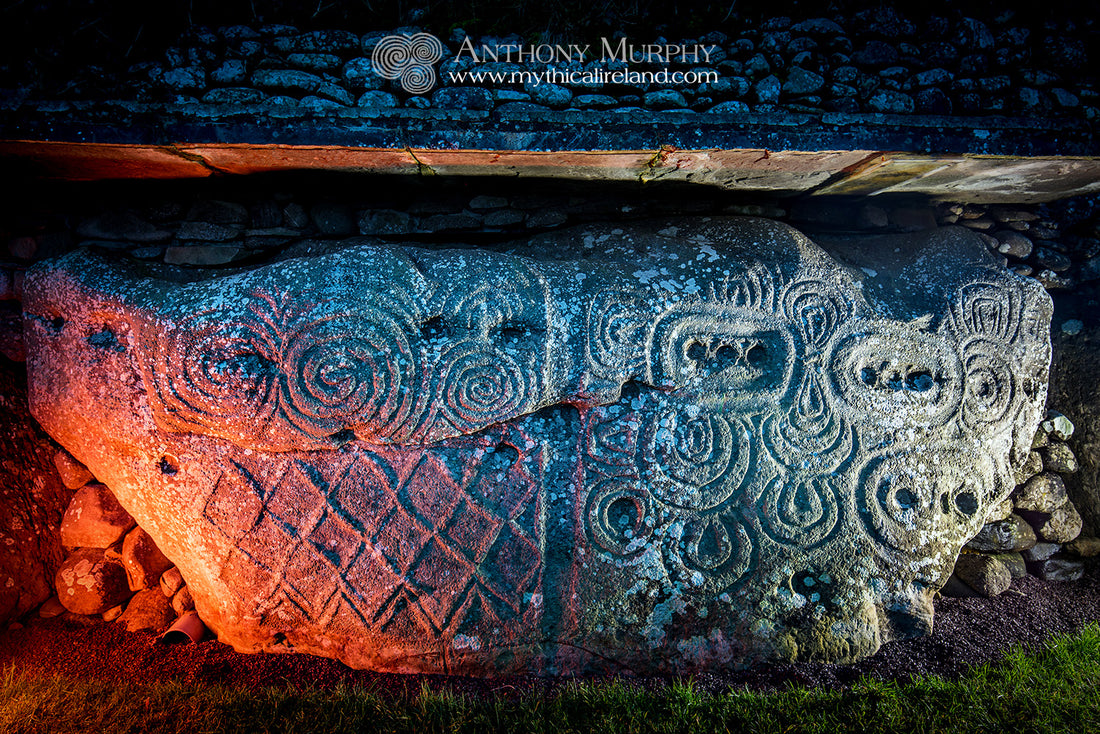
Kerb stone 52 at Newgrange is a sublime work of Neolithic art
Kerb stone 52 at Newgrange, which lies opposite the entrance kerb stone (K1) facing northwest, is one of the great works of art of the Brú na Bóinne megalithic complex.
It is, according to the late Claire O’Kelly, ‘one of the few slabs at Newgrange or indeed in any Irish passage-grave to rival the Entrance Stone in the quality of its design and the excellence of its technique’.
Kerb stone 52 at Newgrange lit with pale blue and red lights.
The megalithic art on K52 was carved in situ. The same broad channels and relief bands that are seen on K1 are employed on K52, and the same ‘all-over pick-dressing’. Fascinatingly, K52 also has ‘natural hollows’ which were subsequently ‘treated’ and ‘incorporated into an overall design’.
O’Kelly added that, in relation to K52, the entrance stone (K1) and the lintel of the roof-box, ‘a sculptural quality is evident … which can owe nothing to chance’.
The ornament of K52 consists of two distinct panels, divided, as it were, by that vertical band in the centre of the stone. The left-hand panel is further divided – there are two double spirals on the upper part, and a series of lozenges (diamonds) forming something of a lattice pattern is found. On the right is a highly unusual (even unique) series of double cartouches which appear to enclose, in each case, a trio of hollows or cupmarks. I have previously suggested the possibility that these might be representations of the belt stars of the constellation we know today as Orion. These three stars ‘point’ to Sirius, which at the time Newgrange was built 5,200 years ago shared the same declination as winter solstice sunrise – meaning that Sirius could be seen from inside the chamber of Newgrange by an observer recumbent on its floor.
Kerb 52 (K52) is a rival to the entrance stone of Newgrange.
In this image, I have attempted to highlight all of the motifs and features of this stone – a difficult task due to the curved nature of the stone. A single oblique remote light source is not sufficient to light the entire surface. Several light sources must be used.
I have created a two-tone image using two different colours with adjustable LED lights. I like the contrast of the bright blue-white light created by the reddish one. What do you think?
OWN YOUR OWN PRINTS OR MOUNTED PRINTS OF THESE PHOTOS.
Sources:
O'Kelly, Claire (1971) Illustrated Guide to Newgrange, John English & Co. Ltd., Wexford.
O'Kelly, Michael J. (1998) [1982], Newgrange: Archaeology, Art and Legend.



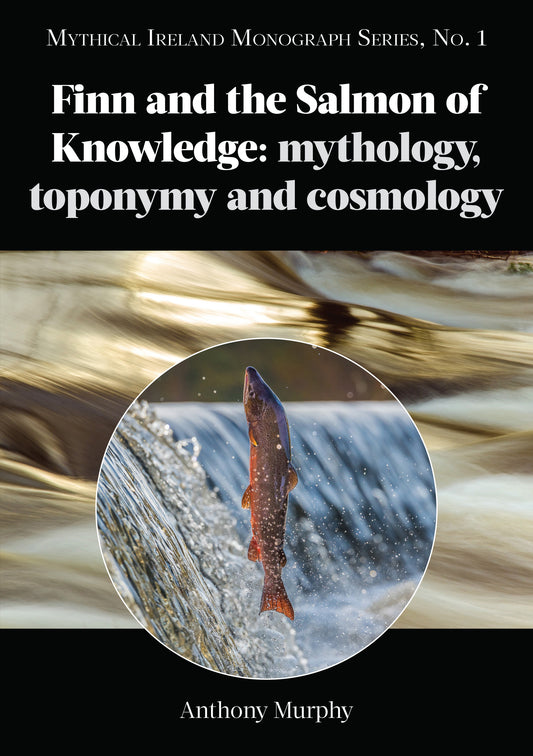
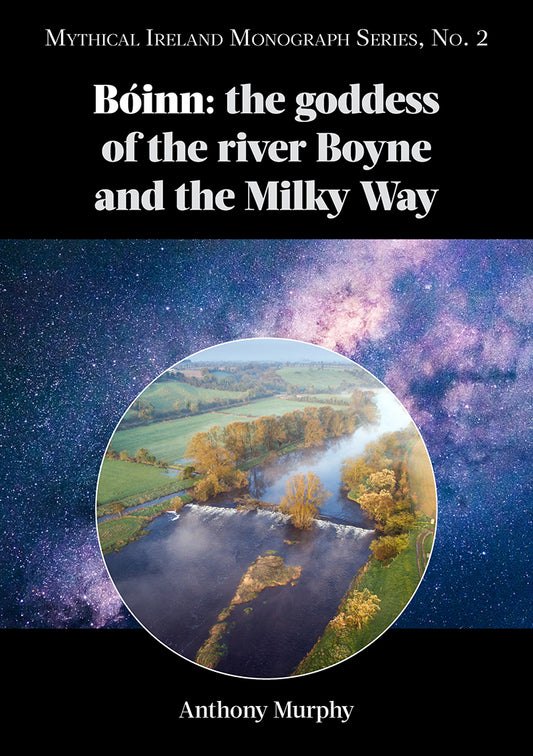
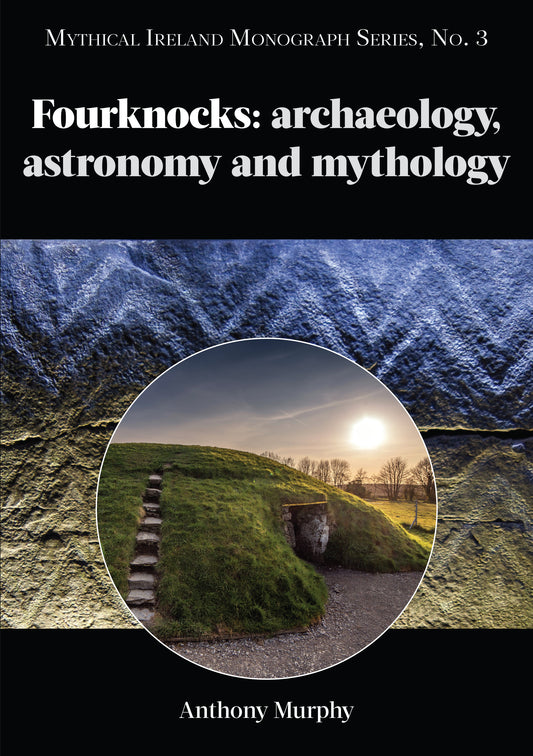
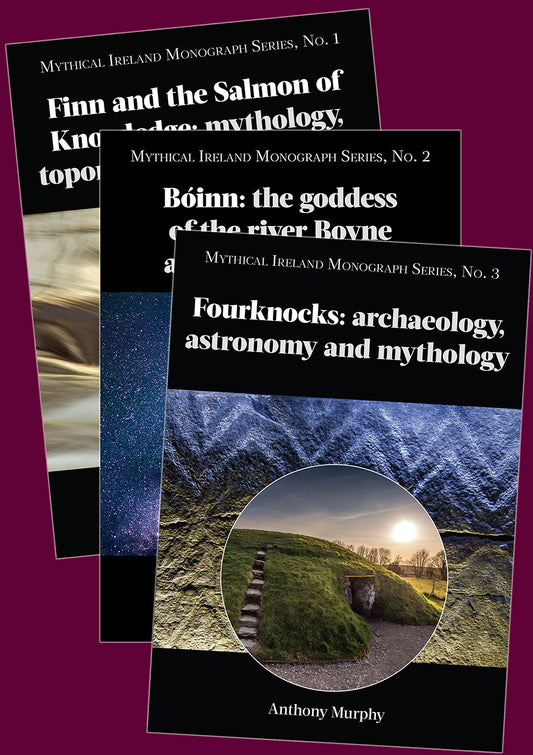
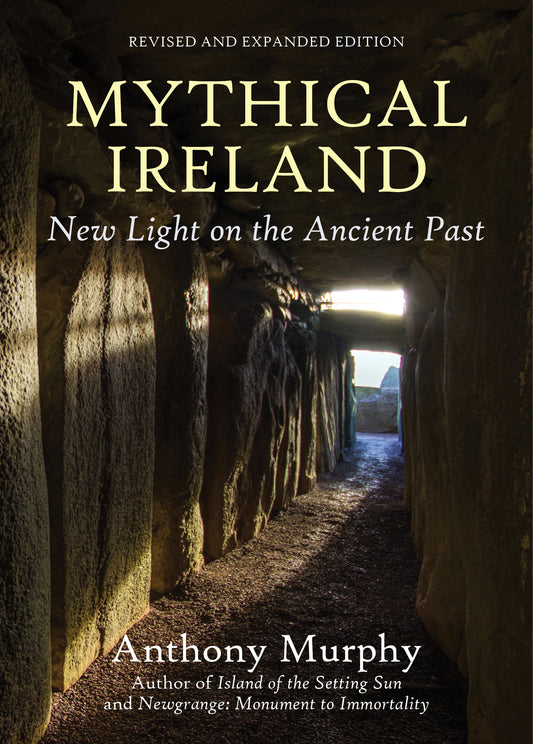
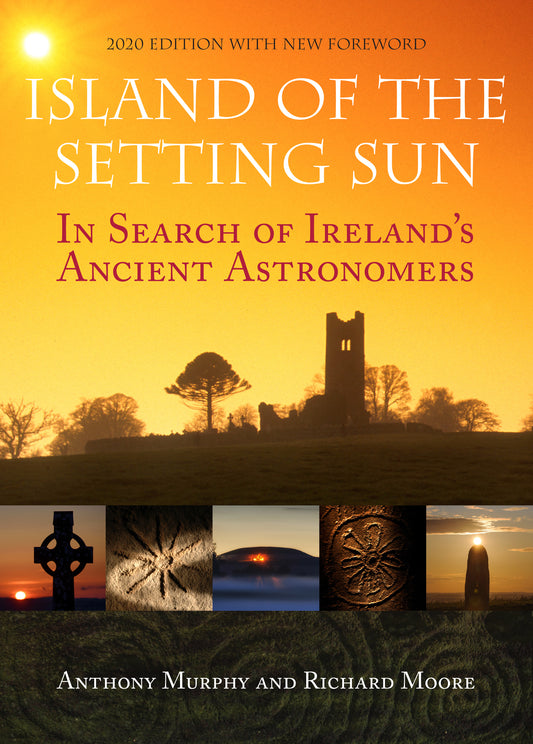

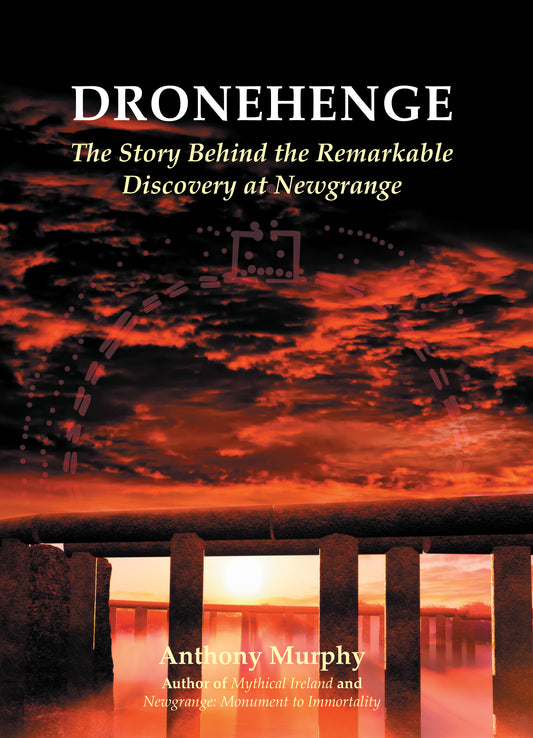
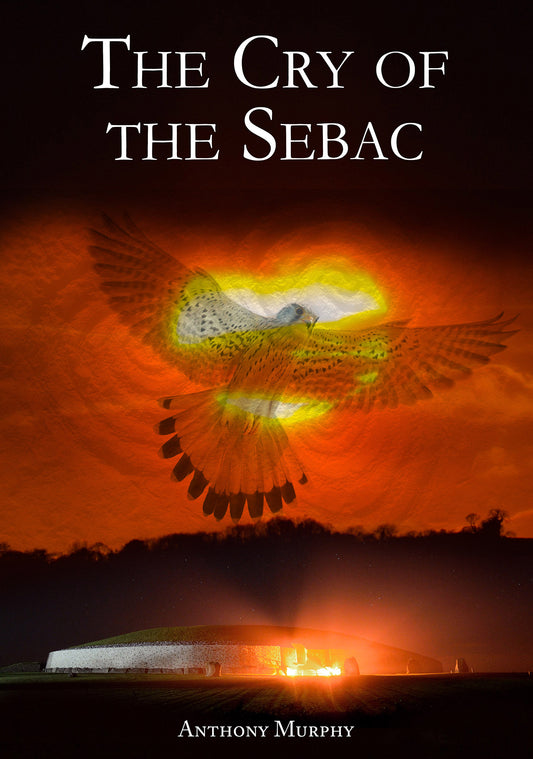
2 comments
I think I see more in your photo and it’s lighting than, I ever did I person, in the light of day. Thank you keep it up.
This article is absolutely fascinating!! I wish we were able to throughly understand the meaning of each carving! They were designed for future generations to learn from their earlier experiences and we are unable to decipher their meanings.